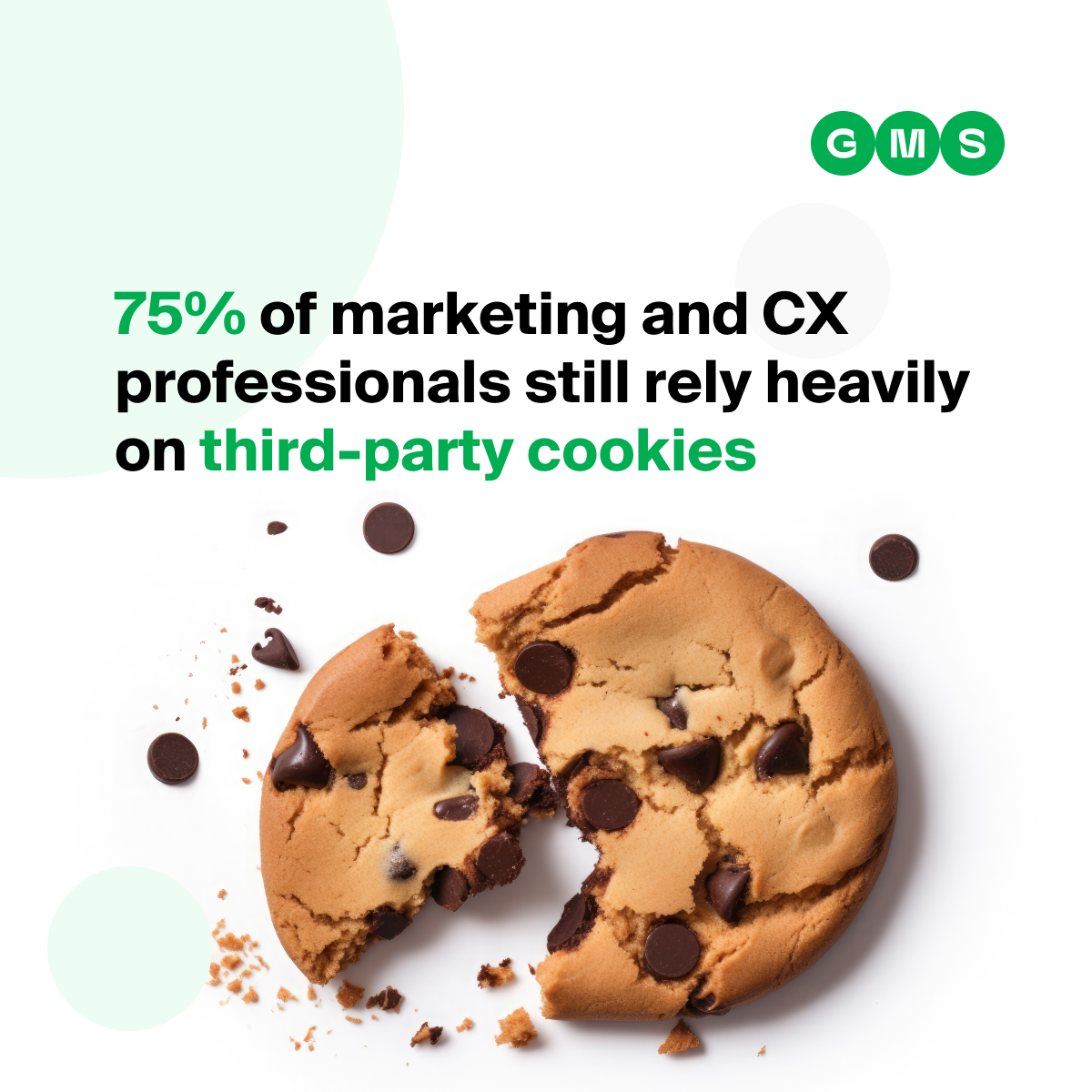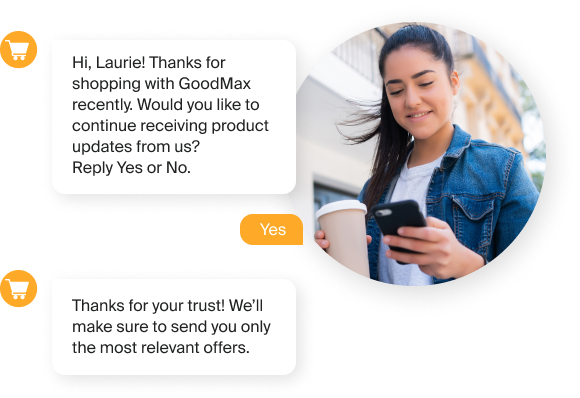It’s a busy quarter for marketers looking to prepare for the upcoming Google Chrome third-party cookie deprecation. First announced in August 2019, Google’s Privacy Sandbox initiative intends to create a safer web by removing third-party cookies that have for years been a foundation of marketing strategies.
As a crucial element of a marketing toolbelt, third-party cookies track online behaviours and provide data needed to produce targeted ads, measure the effectiveness of campaigns and develop more personalised content. Their withdrawal will reduce opportunities for businesses to gain insights into their customers and prospects for the purpose of engaging content. In other words, a major change is coming to the world of marketing, and yet 75% of marketing and CX professionals still rely on third-party cookies. In fact, Econsultancy suggests that only 36% of marketers think they are fully aware of the solutions available to replace third-party cookies.

This article will offer guidance on how to prepare for the change and use it as an opportunity to enhance data collection strategies, provide transparent content, and take a firmer approach to personalisation.
What are Cookies?
Cookies are small blocks of data used by a web browser to analyse and store details of users’ interactions on your website. They track behaviour patterns like time spent on specific sites, interest data such as likes, as well as location and device data. These insights have historically enabled marketers to understand their audiences in order to develop targeted and personalised campaigns.
However, the fact this data is used without consumers’ explicit consent has long been an issue of controversy. Third-party cookies track users’ behaviour from site to site as they sit undetected on their devices, which caused privacy concerns Google is now looking to address.
You might also like: eBook: 5 Top Customer Engagement Trends for 2023 & Beyond
Marketing in a Cookieless Future
Following the announcement of Google’s Privacy Sandbox, advertisers have been brainstorming and developing alternative ways to gain audience insights. Insider Intelligence found that almost half of advertisers worldwide believe that activating their own first-party data is the most promising solution to cookie deprecation. Many teams are looking at solutions that include SMS and email push notifications to deliver targeted content and advertising.
Essentially, a “cookieless future” will force marketers to work smarter and harder to gain insightful and beneficial data to use in their campaigns. Developing and implementing first-party data solutions will be essential for enabling targeted ads, which will need to be accompanied by a secure way of collecting and storing this data. Without this, companies risk losing trustworthy relationships with customers.
In retail, the impact will be felt more than in most other industries. Rather than relying on advertising alone, retail marketers need to focus on creating personalised experiences their consumers expect. Digital users are more privacy-aware than ever before, with Datagrail finding that 60% of consumers are concerned about their online privacy. Paradoxically, however, 73% of them are still demanding personalised experiences that speak to their unique demands.
Within e-commerce, marketing teams often rely heavily on cookies, and this is a practice that needs to change in the following months. Collecting zero-party data via surveys, polls and quizzes should become a priority as a way to gain audience understanding whilst also being transparent about the data that you are gaining.

For example, creating a quiz on a clothing e-commerce website to gain insight on customer sizing, colour, and pattern preferences will allow you to make recommendations which are more insightful than third-party information. AI Chatbots are another great way to gain useful data on website visitors. Customers can easily communicate with the chatbot, which typically sits on the website homepage but keeps the conversation going across web pages and even messaging channels. The chatbot can provide intelligent answers to common questions and can even suggest useful tools that customers can find across the website. For example, a home improvement e-commerce website may offer an interactive calculator to estimate the costs of a project. This information can be used to create personalised marketing campaigns or simply provide companies with a wider understanding of consumer behaviours and purchasing decisions.
There is no doubt that retail brands will have to adapt and change the way that they build audiences and deliver experiences. Adobe reported that six out of ten senior executives say that adapting to the new requirements of a cookieless future will be “disruptive” for their marketing. But this disruption doesn’t have to be negative. In fact, the cookieless future offers a great opportunity to use higher-quality data to build one-to-one customer relationships and loyalty. The fundamentals of marketing are still highly attainable, and looking for ways to bypass third-party cookies may deliver more transparent and accurate results.

Creating Personalised Experience with Zero-Party Data
There are plenty of options to develop your marketing strategies without the need for invasive third-party trackers, no matter what industry you’re in. For a start, Google isn’t banning cookies alltogether. First-party cookies are still a great way to monitor consumers without invading privacy. This cookie is often implemented to enhance user experience as it is responsible for storing passwords, basic data retention and user-driven preferences. These are all insightful pieces of data that can be used to target individuals and enhance campaign performance. Tracking first-party data, such as shopping cart contents, means that brands can deliver relevant information and offers through email subscription services, SMS, WhatsApp, and Viber.
Such contextualised marketing is a great way to grow your audience base, drive web traffic, increase conversions and boost visibility. Mobile messaging offers an easy opt-out solution, helping you stay in touch only with customers who want to hear from you.
How to Prepare for Cookie Withdrawal
Google explained it will gradually remove third-party cookies across 2024 to make the transition less painful. In this time, marketers will need to prepare their new and improved tactics to ensure growth and reach. Here are a few key steps for revolutionising your cookieless future:
- Update your privacy policy – This is essential for letting your consumers know that you are focused on embracing the future and protecting their privacy. Users are more in tune with their online privacy than ever before, so you need to make sure that your privacy policy is up to date.
- Create a strategy for amplifying first-party data – This can be done by building a contextual targeting plan. You must decide on what you want your data to achieve. This might be building brand awareness, re-engaging previous customers, or driving more leads.
- Create more personalised content – This can be done by using first-party cookies to create detailed persona development and needs strategy. Eye-catching and personalised content is essential for a successful marketing strategy and should be delivered in different formats as well as via different channels.
- Embrace mobile messaging – This is a great tool to enhance ad campaigns and personalise customer service. SMS messaging doesn’t require location sharing, an internet connection or an app, meaning customers worried about privacy can still be contacted at any time with direct marketing campaigns. You can also use Over-The-Top (OTT) messaging apps like WhatsApp, Facebook Messenger and Viber, which make it easier to enhance customer communications with photos and videos.
By choosing more relevant and less invasive ways of marketing such as mobile messaging and AI Chatbots, marketers are more likely to see engagements and conversions. This also helps them foster trust as they’re not breaching privacy walls. After all, the vision behind this initiative is to create a better online world for consumers, and marketers need to embrace this idea as they work to adapt their practices.

